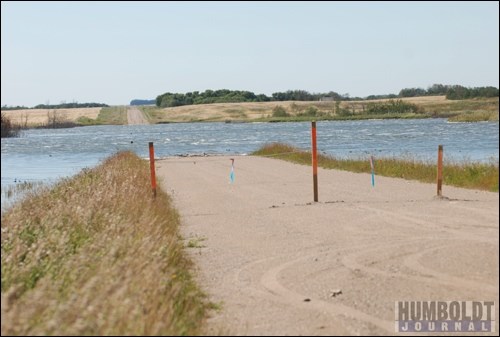It's official. The province is taking the federal government to court over the closure of the culvert under Grid 777 west of Lake Lenore.The Saskatchewan Watershed Authority (SWA) has filed affidavits protesting an order from Environment Canada to close the culvert under Grid 777 to prevent water flowing from Houghton Lake into Lenore Lake.On May 10, an Inspector's Direction under the Federal Fisheries Act was issued to the SWA, ordering it to close the culvert under Grid 777, stopping the flow of water from Houghton Lake to Lenore Lake. The order was issued to protect the fish in Lenore Lake.The order claims that the saline water in Deadmoose and Houghton Lakes is a deleterious substance that would be harmful to the fish and therefore should not be allowed to flow into the lake.According to Dale Hjertaas with the SWA, the SWA is protesting the order on four main points.First is that the water flow is a natural event caused by the high precipitation in the area this spring.The second point is a constitutional one, Hjertaas said. "Water management is under provincial jurisdiction," Hjertaas said. "This looks like the federal government is trying to take control of water management. We believe this case has implications for water management across the country."The third point the SWA is trying to make is that the decision doesn't consider all the factors surrounding the high water levels."We find the basis of making this decision somewhat unreasonable," he said. "It considers only the fish, not the damage caused by the order."The SWA says the federal government did not consider the relative values of everything affected by the high water levels and asks how reasonable it is to cause millions of dollars worth of damage to protect the fish."Our analysis suggests the risk to the fishery is quite low," Hjertaas said. "The fishery is important, but there has to be a balance."According to Hjertaas, over 2,000 acres of farmland have been flooded, along with Grid 777, and the SWA has been forced to build a higher berm at Waldsea Lake and new berms between Deadmoose Lake and Waldsea Lake to prevent water flowing that way as well."All those things together make millions of dollars," he said. "We don't know the final costs yet."The SWA has appraisers out working with landowners to determine the fair market values of the flooded land. That process should be done in the next several weeks, he hopes.The fourth point concerns the definition of a deleterious substance in the Fisheries Act.The SWA does not believe the intended use of that portion of the Fisheries Act used to issue the order means a natural substance like the saline water in Deadmoose and Houghton lakes, Hjertaas said. It means a man-made substance, such as an oil spill, he explained.With the SWA's affidavits filed in federal court, Hjertaas expects a judge to hear the case sometime this fall."We don't see a decision coming until this winter at the earliest," he said.




